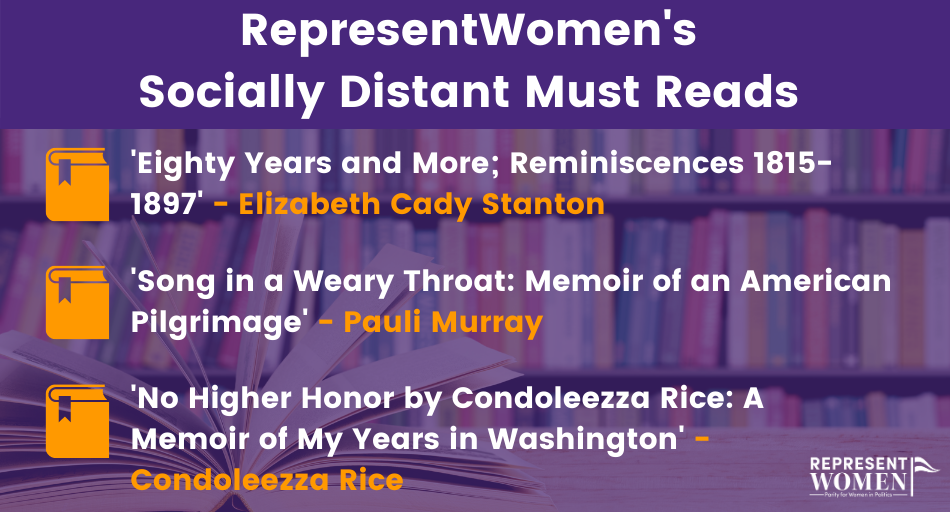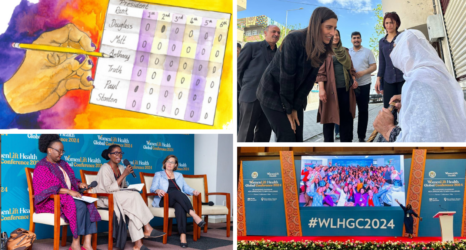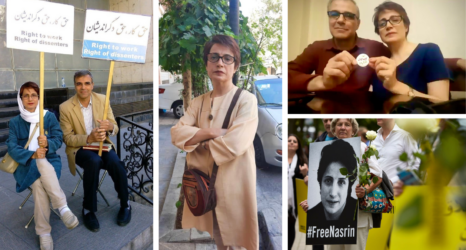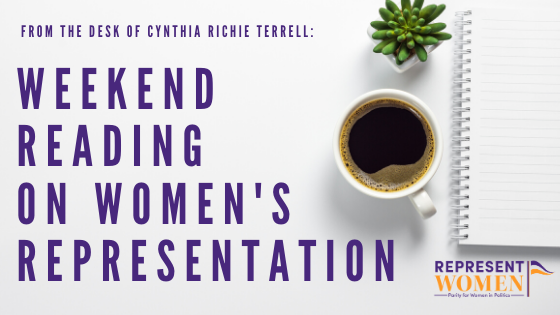
Weekend Reading on Women’s Representation is a compilation of stories about women’s representation in politics, on boards, in sports and entertainment, in judicial offices and in the private sector in the U.S. and around the world—with a little gardening and goodwill mixed in for refreshment!


Women’s History Month and International Women’s Day—on Monday, March 8—are both great opportunities to highlight the importance of women’s representation and equality.
While there has been progress toward gender balance in the United States, I find it staggering that the U.S. ranks about 70th among nations for women’s representation—alongside Kazakhstan, Bulgaria, Vietnam, Iraq and Afghanistan. Countries ranked above the United States are electing more women—faster—by focusing on institutional reforms which create more opportunities for all women to run, win, serve and lead.

According to a new survey conducted by Women Deliver and Focus 2030 the majority of respondents across 17 countries support increased investment in programs to advance women’s equality:
A first-of-its-kind international survey finds that the global public overwhelmingly supports gender equality, and a resounding majority is ready for their governments and business leaders to take action to bridge the gender divide. At the same time, women and girls around the world are suffering the worst impacts of the COVID-19 crisis, which has disproportionately affected their mental and physical health, as well as their economic prospects. The vast majority of respondents — 80% on average across the 17 surveyed countries — said gender equality is a priority to them personally, and 65% said their government should do more to promote gender equality in their country.
The global public perception survey, released in a new report by Women Deliver and Focus 2030, includes 17 countries across six continents whose inhabitants represent half the world’s population.
The results come two months before the Generation Equality Forum, a civil society–centered, global gathering for gender equality convened by UN Women and co-hosted by the governments of Mexico and France. There, leaders in government, the private sector, and civil society will have a critical opportunity to commit to bold, specific actions on gender equality issues. The forum will galvanize political action and secure financial commitments for the period of 2021-2026 on measures to advance women’s rights and opportunities around the world. Sixty-one percent of respondents urged their governments to use this forum as an opportunity to increase funding for gender equality initiatives.
“2021 promises to be a milestone year for accelerating global progress on gender equality. The Generation Equality Forum will call on governments, corporation, civil society and people of all ages and backgrounds around the world to step up with bold commitments to make gender equality a reality,” said Phumzile Mlambo-Ngcuka, United Nations Under-Secretary-General and Executive Director of UN Women. “At such a critical moment it is invigorating to see that global public opinion is not only behind us, but pushing us to do more. The world is affirming that gender equality cannot wait. We can and we must achieve it in our generation, and it must be intersectional and intergenerational.”
Despite 25 years of progress since the landmark World Conference on Women in Beijing, no country has fully met its commitments to gender equality. More than half of the world’s girls and women—as many as 2.1 billion people—live in countries that are not on track to reach key gender equality-related targets by 2030.2
“We’ve made a lot of progress on gender equality over the last 25 years, but there’s so much work left to do. Now, with COVID-19, just as women are assuming an outsized role in responding to the pandemic in their communities and at home, they are also experiencing enormous added burden, and we could see the consequences of that strain playing out for years to come,” said Divya Mathew, Senior Manager, Policy and Advocacy at Women Deliver.
“This survey shows us where the world has fallen short, but it also delivers the encouraging news that the vast majority of women and men around the world expect their leaders to take action to advance gender equality.”
Fielded in July and August of 2020, the survey offers a comprehensive picture of public experience and perception across six major gender equality issues, in addition to insights on how the COVID-19 pandemic had affected respondents’ lives, livelihoods, and emotional health. It also asked participants about their personal experiences with gender discrimination, their attitudes about sexist practices, and their beliefs about the causes of gender discrimination.
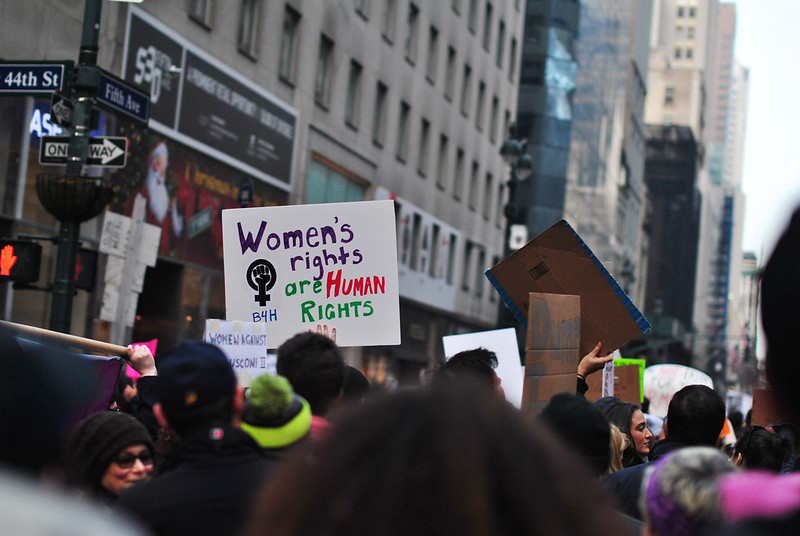
This powerful piece in the Doral Family Journal by María Alejandra Pulgar is clarion call to accelerate the pace of change toward women’s equality and leadership:
International Women’s Day has been celebrated every month of March for more than a century, and every year commitments are made worldwide to make changes on the issues of gender bias and inequality. But a definitive improvement has yet to come.
It is the 21st century and there are still girls in the world who do not have access to schools, women who do not earn the same wages as their male peers for the same work or are overlooked for raises or positions of power. In the most powerful country in the world merely this year a woman has become Vice President for the first time. There are still plenty of glass ceilings to shatter for girls and women, and it is long overdue they achieve equality in protection, compensation, and opportunities.
Celebrating women’s achievements is essential but is not enough. Society needs to speed up its evolution of understanding that, regardless of the gender of those making them, decisions need to be fair and opportunities should be open for all human beings because it is the right thing to do. It is on the shoulders of families to raise their children with that awareness to achieve a conclusion soon to the never-ending story of the fight for gender equality.
The most important issues women face today
This year the theme for International Women’s Day is #ChooseToChallenge, with the objective of challenging society and speaking up, to raise awareness and support on the main issues women still confront worldwide, taking the premise that when matters are discussed and addressed solutions are more likely to emerge.
According to a recent Pew Research Study, the more important gender equality issues are equal compensation in the workplace; discrimination of women for promotions, hiring and education opportunities; support and better-paid maternity/paternity leave; legal, political, and business leadership representation of women; reproductive rights; sexual harassment and violence against women; balance on traditional gender roles in society; value and recognition of women’s contributions; women’s roles in the armed forces, and equal share of responsibilities for childcare.
The study also shows that a majority of those who consider the US have not made enough progress on gender equality believe the main obstacles for it to happen are the legal differences on several rights that women have compared to men, as well as not enough females in decision-making positions, and the different expectations that society place on women and men roles and responsibilities towards family.
Women are able to vote in the United States merely since 1920 when the 19th amendment was adopted. It is still considered the greatest achievement in women’s rights because it opened the doors for women to serve in office and support the passing of laws to improve their own protection. The right to vote came after half a century of marches, protests, violence, and arrests against those who promoted it. Men have been prevalent leaders in society since the beginning of civilization and that has made it more difficult for women to gain over the centuries an equivalent position of influence in their communities.
The creation of a more inclusive world where all people have the same advancement opportunities, without gender bias, depends on a sustained global effort to raise awareness on the issues and to celebrate the achievements that demonstrate women’s capacities and abilities; hence the importance of celebrating International Women’s Day.
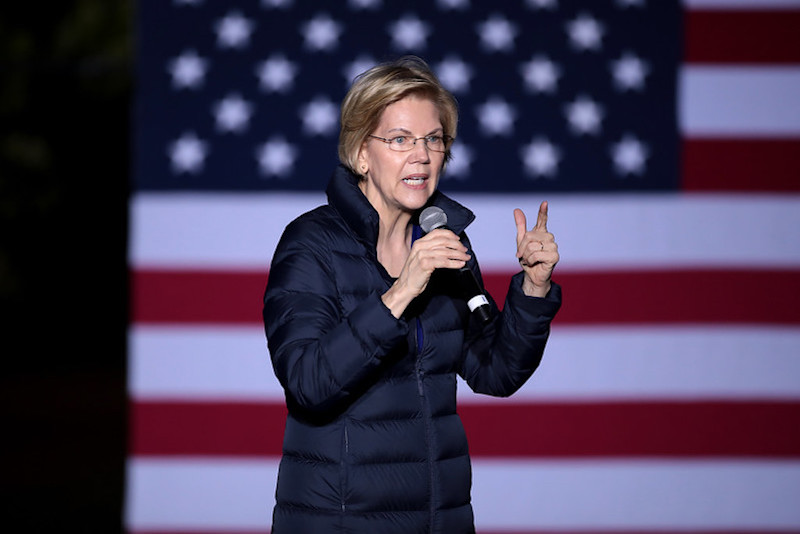
Overcoming millennia of oppression requires a myriad of remedies across sectors. RepresentWomen’s work is focused on proven, data-driven, strategies that we know are electing more women to office faster because they are used in the 70 or so countries ranked above the United States in women’s representation.
In the first of a Women’s History Month series on Ms., Maura Reilly writes about reforms to the recruitment process—used effectively in other countries—to ensure that more women run:
The 2020 election cycle made many headlines over the past year, and one common refrain from feminist publications was the record number of women running for elected office—a refrain, which while factually correct, glosses over the continued gap between the number of women running for office compared to the number of men. At the national level, 344 women ran for office while 684 men ran, once again making up the majority of Congressional candidates.
Women make up 51 percent of the U.S. population and less than 30 percent of all elected officials—a discrepancy that demands structural changes to correct. But an easy first step is ensuring women make up at least half of all candidates. Political gatekeepers including political parties, PACs, individual donors and recruitment organizations all have a role to play in improving the rate at which women run for office.
Setting Recruitment Targets
While men tend to be more likely to nominate themselves to run for elected office, many women don’t see themselves as viable candidates until they are asked to run for office. And a large number of women candidates must be asked or told to run multiple times before taking the plunge.
Political parties in other countries have had success troubleshooting recruitment strategies for women, which both the Democratic and Republican parties can learn from. During the 2019 Canadian elections, women made up 49 percent of the New Democratic Party’s fielded candidates outperforming many of the other parties for women’s representation. Their strategy? “We’ve gone back to women a number of times—eight to 10 times at least,” said Melissa Bruno, NDP’s national director.
U.S. political parties and candidate recruitment organizations must commit to recruitment targets for women and alter their traditional outreach strategies to address the concerns women have about running for office. Political parties can go so far as to adopt gender inclusive quotas for down-ballot races ensuring women and non-binary folk alike are recruited to run at higher rates—a step the Democratic Party has already taken for state delegations to the national convention held every four years.
Setting Funding Targets
Despite the growing grassroots and PAC donations every election cycle, women continue to raise on average less than men. PACs and large individual donors give most of their donations to incumbent candidates who with a success rate of 96 percent are nearly guaranteed to keep their seats.
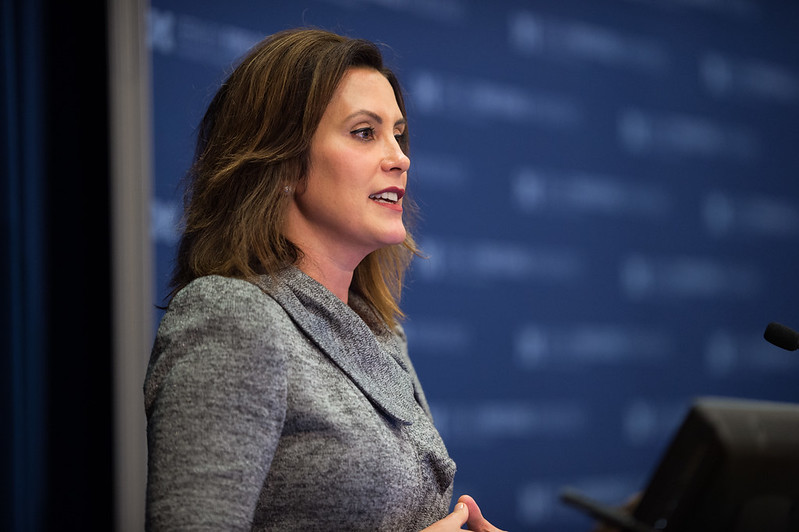
Increasing the number of women in elected office is just part of the solution, according to this persuasive piece in Foreign Policy by Saskia Brechenmacher, Katherine Mann and Lauren Meadows:
Statistically speaking, there has never been a better time to be a woman in politics. Optimists point to the growing number of female elected leaders as a sign of progress; last year, more women served as parliamentarians, ministers, and heads of state than ever before.
The United States is no exception to this trend, with women running for office—and winning—in record numbers in elections in 2020. President Joe Biden also made U.S. history by choosing the first woman and woman of color as vice president and selecting more female cabinet leaders than any of his predecessors.
But simply counting the number of women in political office does not provide a full picture of women’s political power, either in the United States or elsewhere. In fact, doing so distorts perceptions of progress and reinforces the flawed assumption that simply increasing the number of women in high-level political positions is a silver bullet for women’s political empowerment.As policymakers in the Biden administration focus on implementing the Women, Peace, and Security Implementation Plan and on retooling U.S. foreign policy to better support women’s political leadership abroad, they must move beyond a narrow focus on numeric representation. Understanding—and measuring—women’s political empowerment in more comprehensive terms is the only way to make sustainable progress on gender equality.In political institutions where patriarchal exclusion has long been the norm, women’s presence does of course represent a meaningful change.
That’s why major international gender equality indices, like the United Nations Development Program’s Gender Inequality Index or the World Economic Forum’s Global Gender Gap Index, measure women’s political empowerment by tracking women’s share of legislative and ministerial positions over time. A focus on elite representation also informs many international development programs aimed at bolstering gender inclusion in politics, which often use the number of women elected as a key indicator of success.
At the same time, there are clear limits to merely adding women to formal political spaces while institutions, norms, and practices remain unchanged. For one, individual women’s presence within parliaments and governments does not necessarily translate into meaningful political influence. Gendered discrimination and informal power structures often inhibit women’s decision-making power. Male political leaders may also promote women loyal to the dominant political project, while pushing out those who challenge the status quo. Rwanda exemplifies this trend: Although the country leads the world in women’s parliamentary representation, women politicians and activists who criticize the ruling government face harassment and repression.
Moreover, increases in women’s political representation at the national level do not automatically translate into increases in women’s everyday political agency and power, particularly in highly stratified societies. In East and Southeast Asia, for example, women’s political engagement—in the form of discussing politics, voting, campaigning, and protesting—has in fact decreased as women have gained greater access to national parliaments. This pattern suggests that the “role model effect” of women in high politics does not always trickle down to everyday citizens.Instead, it is possible that women may disengage from politics if they view elite women’s participation as having little impact on their lived experiences of gender inequality and discrimination. Given the limitations of using women’s presence in legislatures as a proxy for empowerment, what does a more nuanced approach to gender equality in politics look like?

I was very interested to read this piece in The Sydney Morning Herald by Rachel Nolan that explores strategies to increase women’s representation in the Australian Parliament that includes an argument to increase the number of representatives. Adding seats may seem challenging but it’s the most effective way to create open seats, where women have a much greater chance of winning.
The team at RepresentWomen has endorsed this strategy to increase the number of competitive open seats for the United States Congress—see our resources and brief here—and it’s great to see the discussion evolving among women’s representation advocates in other countries too. Interesting to note the author of this piece laments the average size of electorates in Australia—107, 782—which is of course about a seventh the size of U.S. congressional districts.
If we accept the position that a more representative Parliament is desirable but that affirmative action displaces “meritorious” men, then we have no choice but to get creative with the alternatives.
So perhaps instead of affirmative action, we expand the Parliament and the major parties agree to pre-select women in all newly created seats.
An expansion of the House of Representatives from 151 to 211 could create 50/50 gender parity at the next election, while avoiding the uncomfortable tap on the shoulder for sitting men.
The change could be legislated – no referendum is required – though the nexus built into the constitution means the Senate would also have to be expanded.
We know what you’re thinking — “not more politicians!” — but expanding the Parliament would fix a number of other problems.
With an average electorate size of 107,782 voters, Australia has some of the most populous federal electorates in the world. Among the few countries with bigger seats are Russia, Brazil and the US – hardly beacons of contemporary, functioning democracy.
Australia’s large electorates don’t bring about cost savings. Rather, our MPs are serviced by large staffs, who themselves are not accountable to the electorate.
And our small Parliament drives partisanship. In large chambers, such as Britain’s 650-member House of Commons, there is leeway for members to vote with their consciences. Australia’s tight numbers drive iron party discipline.
As in any workplace, the Australian Parliament’s culture derives from power. The only way to increase women’s representation without threatening the existing power is to expand our Parliament.
The governing Coalition has fallen behind community standards regarding the voices of women. Without action, Australia will continue to slide down global rankings.
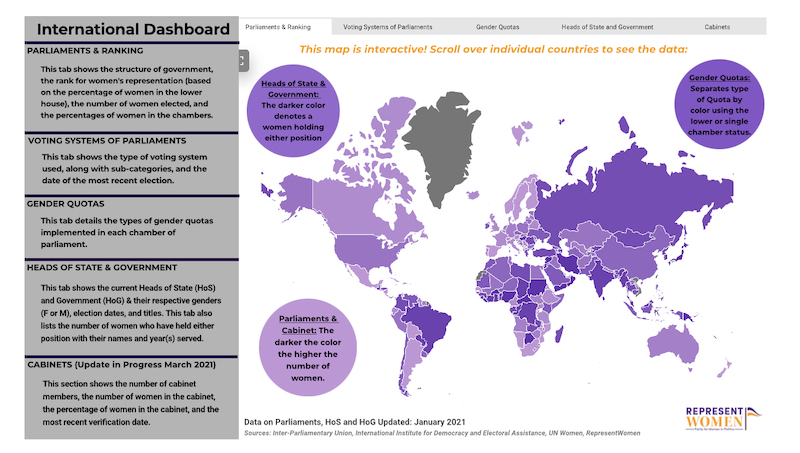
As a reminder for readers, the team at RepresentWomen has created a terrific dynamic dashboard on international women’s representation that shows the type of quota and voting system used in every country along with the gender balance on cabinets and current and former heads of state and government.
It seems like a fitting image to accompany this great newsletter from Electoral Affairs which is chock-full of resources including RepresentWomen intern Fatma Tawfik’s recent piece on women’s representation in Egypt:
Quotas are not obvious and it does take time and pressure to fight for them. In one of the most recent reports on the issue, DemoFinland flags that less than 7% of the world’s states have female heads of states or heads of government and, on average, less than 25% of the parliamentarians across the world are women. In the EU, 31.4% of national ministers are women. The International IDEA gender quotas database is the go-to research tool here.
Currently, the struggle for effective measures to increase women’s participation is ongoing in Liberia with the reform of the election law and in Somalia with the long-awaited, historical electoral process. In Egypt, 25% of seats for women in the parliament were recently secured by a constitutional amendment. But voices in favor of the safeguards of women’s participation in power-sharing can be heard in many other places, like Israel or Kenya.
In other places, less promising stories emerge. Yet, lessons for activists and civil society should be drawn also from there. Côte d’Ivoire, for example, passed a law in 2019 requiring political parties to meet a female candidate quota of 30% for parliamentary elections. But with less than a month to go before the upcoming elections, no party has reached this threshold.
In Myanmar, these bold and brave women have taken to the streets to protest against the military coup and demand a return to democracy.
‘We’re unstoppable’: Meet the women leading Myanmar’s protests. Another text on the situation in the country is even more to the point: The exclusion of women in Myanmar politics helped fuel the military coup.
Radio in Mali can empower women by remembering they are part of a social web. Studio Tamani is normalising the debate on women’s issues by broadcasting women-related programmes.
Defend Defenders launched a campaign on women human rights activists in Africa bringing up good practices, emergency phone lines and testimonies of activists.
This groundbreaking awarded research looks into interactions between post-election violence and sexual violence in Kenya and Nigeria.
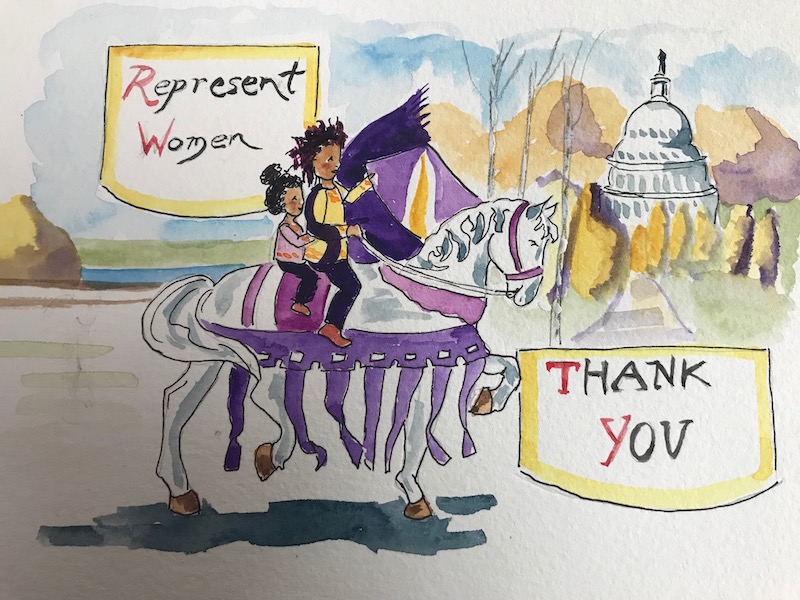
RepresentWomen’s resident artist Melanie Humble reimagined the iconic image for the Women’s Suffrage Parade in 1913 to reflect the women’s representation movement in 2021. Thank you for all the amazing partnerships that will help to manifest the goal of equality for all women, in our lifetimes.
Check out this week’s suggested feminist reading:
